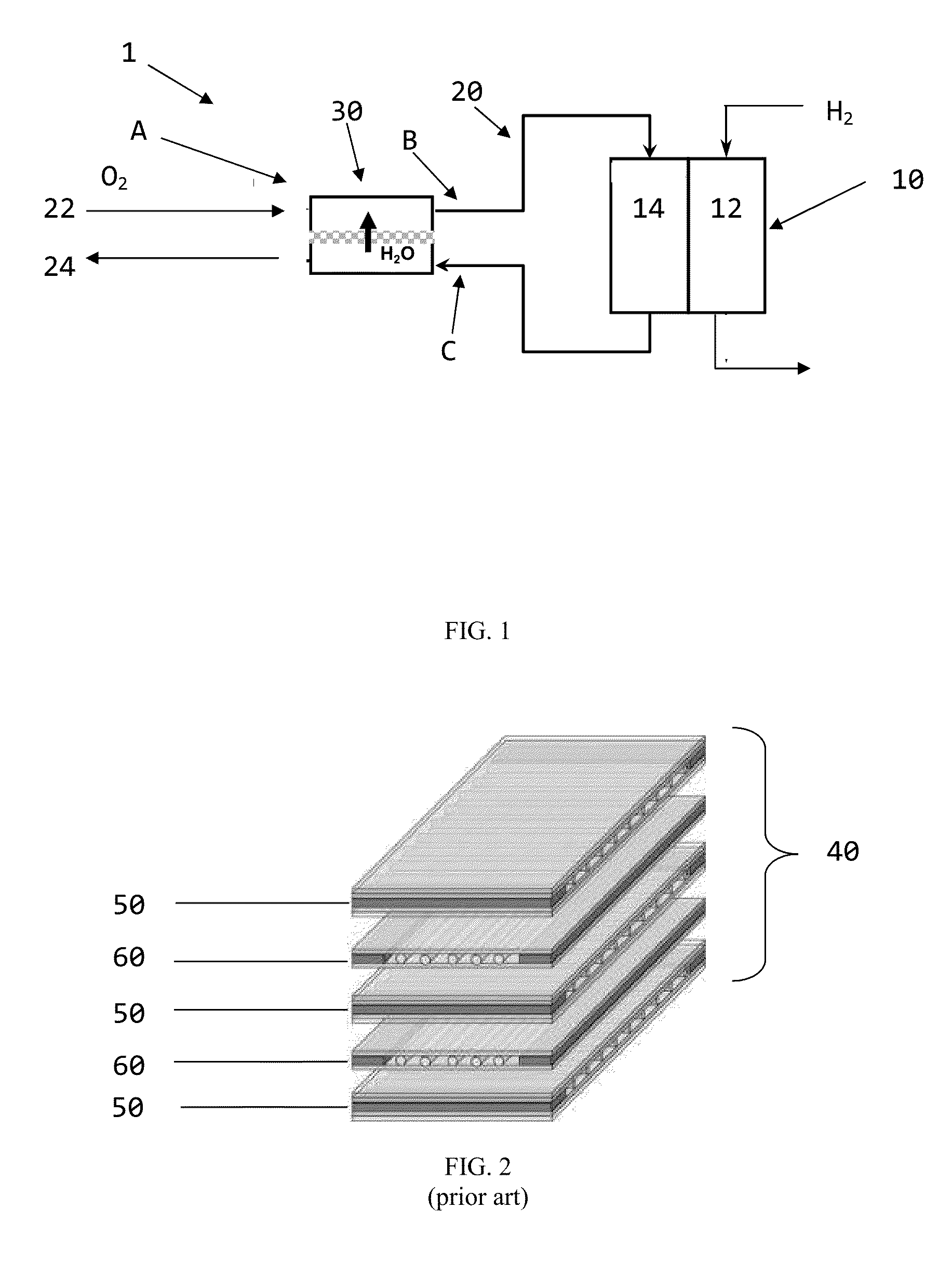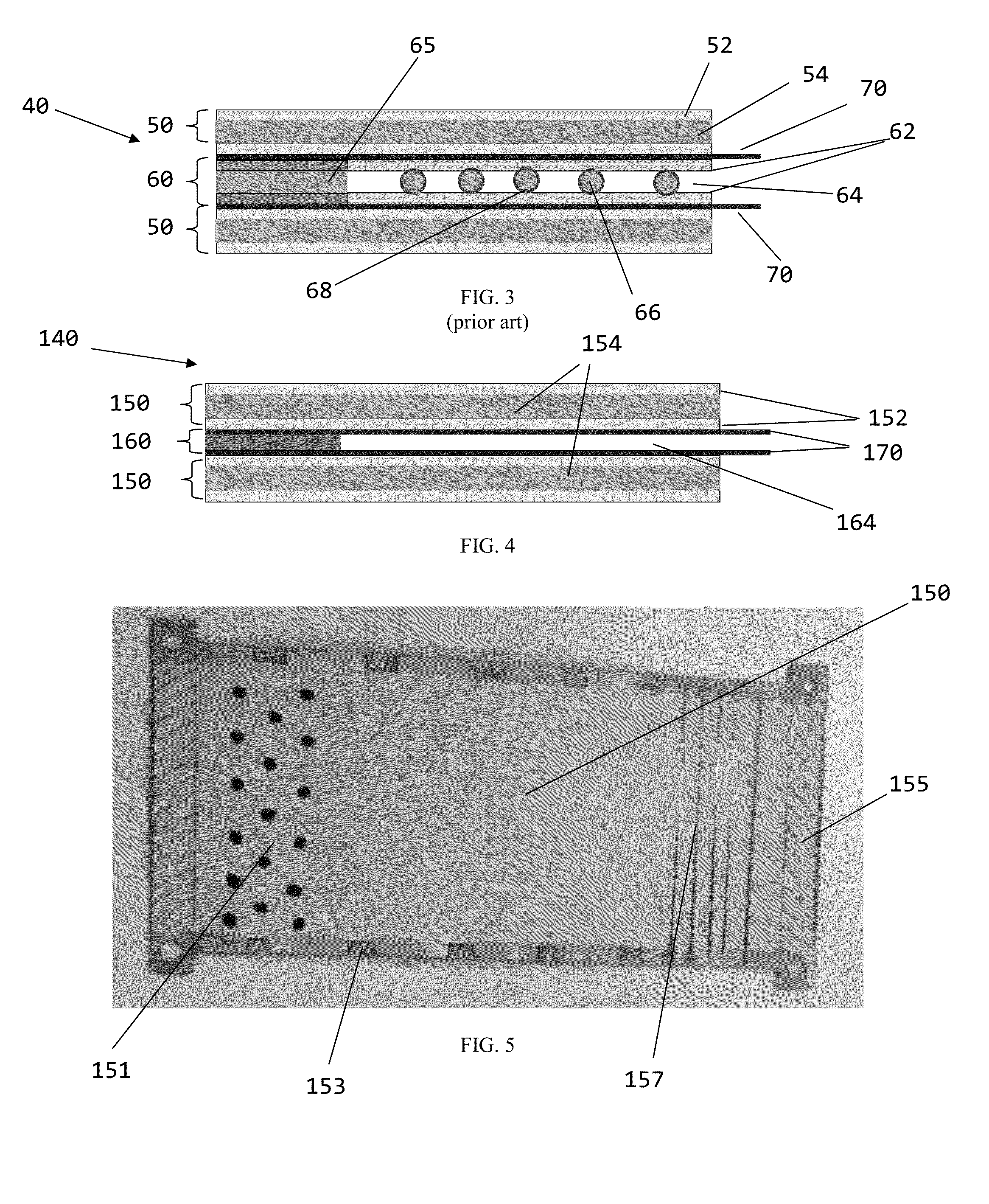Discretely supported wet side plates
a wet side plate and discrete support technology, applied in the direction of cell components, final product manufacturing, sustainable manufacturing/processing, etc., can solve the problems of fuel cell thickness and part count, and achieve the effect of increasing dry side flow channel thickness, fuel cell thickness and part count, and efficient water vapor transfer
- Summary
- Abstract
- Description
- Claims
- Application Information
AI Technical Summary
Benefits of technology
Problems solved by technology
Method used
Image
Examples
Embodiment Construction
[0023]Referring first to FIG. 1, a fuel cell system 1 made up of a fuel cell stack 10 with numerous individual fuel cells, each of which has an anode 12 and cathode 14, is shown. Various flowpaths are used to convey reactants and their byproducts to and from the respective anode 12 and cathode 14. A WVT unit 30 is fluidly coupled to appropriate portions of flowpath 20 to promote the exchange of humidity between the exhaust 24 and the feed 22. As shown with particularity for the cathode 14, dry air from a compressor (not shown) is fed through feed 22 over a range of pressures and low humidity (typically around 0%) into the WVT unit 30. Likewise, exhaust being discharged from cathode 14 passes through exhaust 24 to the WVT unit 30. The cathode exhaust 24 is at a lower pressure and higher humidity than the air entering the WVT unit 30 on the feed 22 side. Inside the WVT unit 30 is a core made up of numerous wet side and dry side plates which are stacked in an alternating arrangement su...
PUM
| Property | Measurement | Unit |
|---|---|---|
| height | aaaaa | aaaaa |
| height | aaaaa | aaaaa |
| humidity | aaaaa | aaaaa |
Abstract
Description
Claims
Application Information
 Login to View More
Login to View More - R&D
- Intellectual Property
- Life Sciences
- Materials
- Tech Scout
- Unparalleled Data Quality
- Higher Quality Content
- 60% Fewer Hallucinations
Browse by: Latest US Patents, China's latest patents, Technical Efficacy Thesaurus, Application Domain, Technology Topic, Popular Technical Reports.
© 2025 PatSnap. All rights reserved.Legal|Privacy policy|Modern Slavery Act Transparency Statement|Sitemap|About US| Contact US: help@patsnap.com



